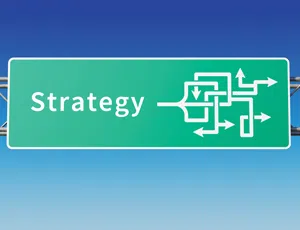Take the time to reflect, evaluate and plan for the future of your business.
This has been a year of uncertainty and change. It is best to take a moment to pause and evaluate what your business needs now and in the future to succeed. By taking the time to reflect, you will be able to continue to grow your business with a stronger mindset and more clarity moving forward.
What steps should I take? Where do I start? These are questions asked by business owners today as they formulate their plan toward business independence.
Upon pausing and reflecting on the past year, as a business owner, you may realize that at some point you will have to live without your business, either by your own choosing or fate.
The next question is, can your business live without you?
As you answer this question, this may be a pivotal moment in your business life to decide to move in a new direction for your business and yourself. What are your first thoughts and steps as you begin to shape your business direction?
As any athlete or entrepreneur will say, the first steps are critical as you successfully shift in a different direction. Where is your compass leading you?
With 2.3 million businesses ready to retire and 60 percent of those businesses uncertain of how to achieve their business independence, many today are forced late in the game to look at their priorities.
To stay ahead, the best place to begin is to create a playbook for you and your management team to execute as together your effort will assure long term business success.
It’s time to begin “AIDing” your business. AID your business stands for:
- Assess the current state of your company,
- Identify key employees,
- Document your knowledge of the business
Assess
Where is your business today and where is it going?
With all that has transpired over the past year, now is a good time to assess where your business is today and develop a plan on where it goes from here.
To accomplish this and to achieve clarity, your best place to start that assessment is with a SWOT Analysis
As an owner, by performing a SWOT (Strengths, Weaknesses, Opportunities and Threats), you will gain the clarity you need to focus on simplifying your business towards successful long-term planning and begin to envision your succession from the business.
As you begin to identify the strengths and weaknesses of the assessment, you will then focus more on the internal aspects of your company and the direction to take, for your employees and the current resources, systems and procedures in place.
It will become clear to you how to grow your business from this point on.
As you access the opportunities and threats, focus on the external aspects that your company operates in and what the future may look like for the industry, its markets, and your competitors.
Once completed, this assessment will give you the fortitude to build on your strengths, curtail your weaknesses, respond to any threats, and exploit your opportunities while at the same time grow the business value.
Identify Key Employees
Now is a good time to identify 1-3 key employees in your company that fully understand your business and its operations. These employees are critical to the future of your company, with or without you. They are key because they can successfully manage the business in your absence.
Ask yourself, who has helped you manage the business during this past year of uncertainty?
What role will these key employees play in the future of your company and how will you incentivize them to be a part of that future?
Employees you identify as “key” should be privy to the plans of the business, and they should be part of a discussion about how the future and the growth of the company includes them.
Once identified, it is imperative to have your key employees be a part of your assessment and SWOT analysis.
A well-developed plan will outline the employees’ future responsibilities and opportunities with the business, and should include an incentive plan that aligns with your company’s business plan.
Naturally the key employees you identify as future managers should also be committed to the success and future of the business.
Having the best interest of the business in mind will not only help the business succeed, but will enable the newly-designated managers to succeed as well.
Document
Document an operational plan for the business in your absence. This past year has shown us that life can be very unpredictable. How we approach it to move forward positively towards the future, is what is certain now.
Shifting towards your future, puts into focus the need for an operational plan for your business to succeed in unprecedented times and succeed without you.
Taking the time now to prepare is a must as you do not want your business to face that uncertainty without a plan to operate in your absence.
As you create the operational plan with the team, note the plan needs to consider your potential short-term and long-term absence if it comes to fruition.
You need to document a clear set of instructions on what needs to be done in your absence and who should do it.
As well as document your knowledge about the operations of the business so it can serve as a resource in your absence.
Allow time to communicate this operational plan to the key employees of your company and make sure they have the information they need to operate the business in your absence.
This is a positive time for businesses. Although the past year has been difficult and challenging, take it as an opportunity to begin again, with a fresh new mindset.
By AIDing your business, you can put your company on the path to a successful future for you and your business.
This process will also help you consider how independent you are from your business and what it will take for you to achieve your definition of business independence.
Pivot now, and the rest will come.
Bob O’Hara is President/CEO of O’Hara & Company founded in 1995 to address the growing need for entrepreneurs to create a comprehensive exit strategy for their businesses. For additional information visit exitplanning-edu.com.



